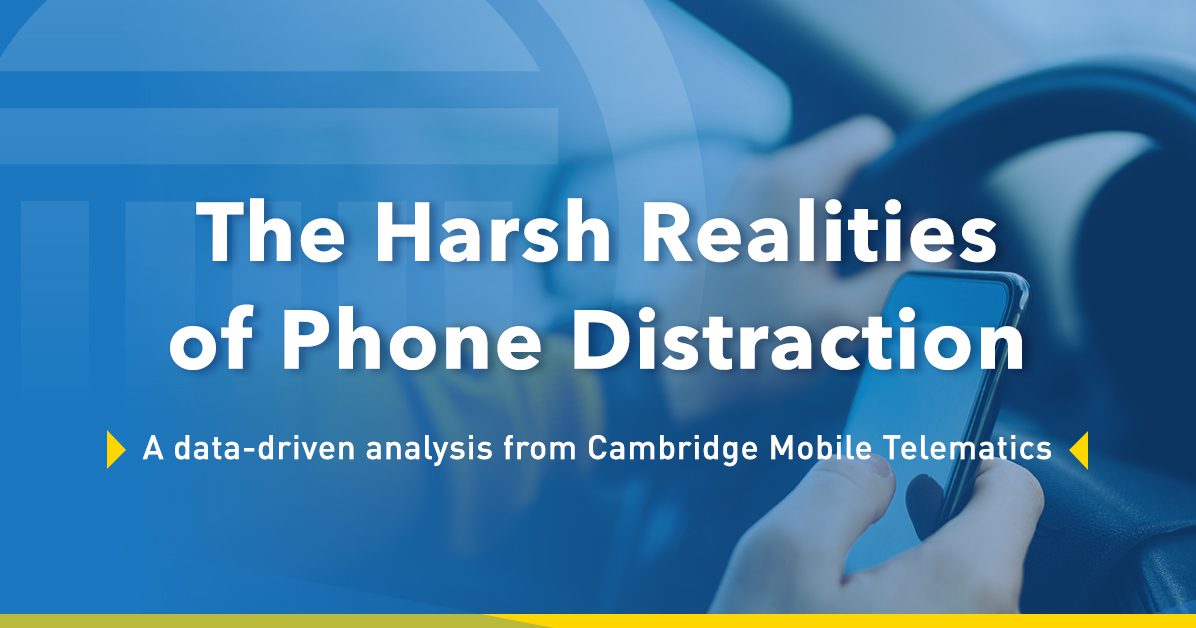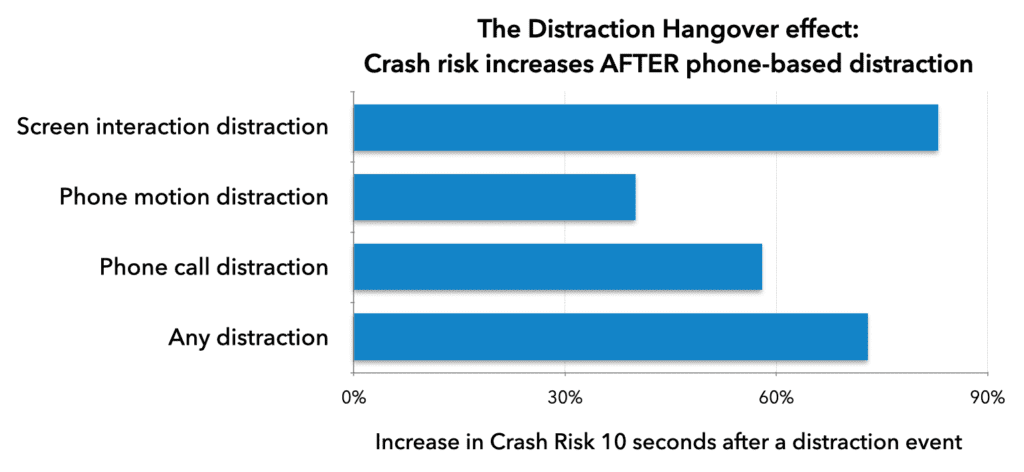The "Distraction Hangover" Proves Phone-Distraction Behind the Wheel is More Severe than Projected

What happens when you put the phone down? How long does it take for your attention to refocus on what you were doing? The data scientists at CMT have been looking at this question in the context of phone-based distracted driving and the findings are sobering.
Based on telematics data collected in the last five years, we have been able to analyze what we have coined as “ the distraction hangover.”
We know that when a driver is distracted by a phone, it is for an average of 23 seconds. However, we identified a continuing impact of distraction after the actual event has ended; during this “hangover” the driver is unaware of the road around them despite no longer interacting with their phone.
To analyze this effect, we have defined it as the increased likelihood of a hard braking event occurring immediately after a phone-based distraction event. We use harsh braking because not every distraction event leads directly to an insurance claim; that doesn’t mean the danger doesn’t exist. Hard braking represents a clear indicator of slow-to-react driving behavior that is risky.
CMT measures three types of phone-based distraction events:
- Screen Interaction, such as texting, scrolling, or swiping
- Phone Motion: manipulating and reading the phone
- Phone Calls
The analysis of millions of trips and their patterns of distractions suggests that the duration of the hangover period and the severity of its impact varies depending on the type of distraction.
In the following graph, we drew the baseline as the average rate of harsh braking events for non-distracted drivers. Because any driver is at risk of a collision, the data shows the increase in risk after the distraction has ended. We’ve included the three types of distraction event above, and a combination of the three to show the impact the phone has in general.
While different distraction hangovers have various impacts on safety, the most dangerous time may not be while the driver’s eyes and hands are preoccupied. While distraction events are demonstrably dangerous, on average, the distraction hangover is 70% more likely to contain a risky hard braking event.
For the full analysis, download the distracted driving report.
